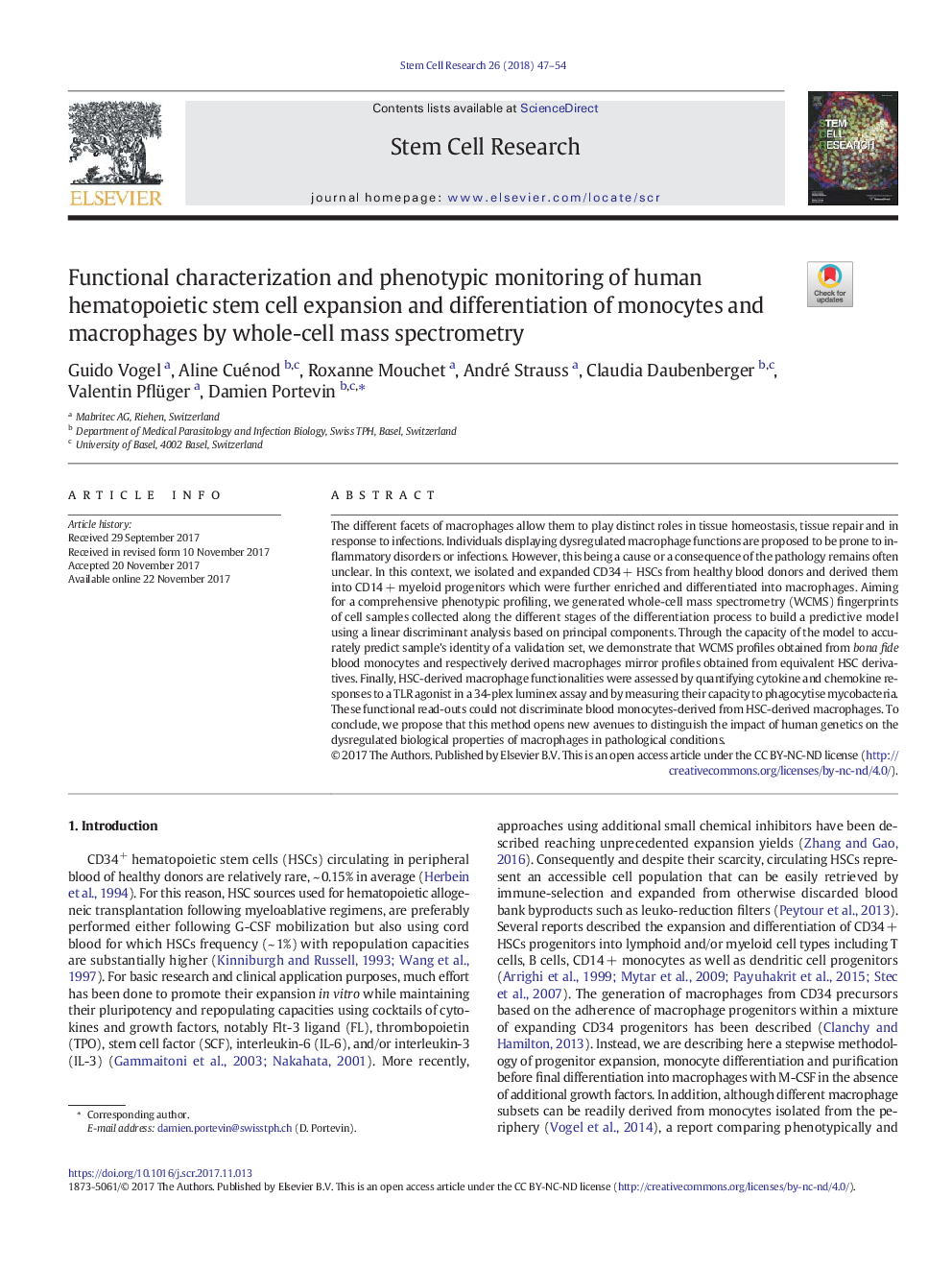| Article ID | Journal | Published Year | Pages | File Type |
|---|---|---|---|---|
| 8425625 | Stem Cell Research | 2018 | 8 Pages |
Abstract
The different facets of macrophages allow them to play distinct roles in tissue homeostasis, tissue repair and in response to infections. Individuals displaying dysregulated macrophage functions are proposed to be prone to inflammatory disorders or infections. However, this being a cause or a consequence of the pathology remains often unclear. In this context, we isolated and expanded CD34Â + HSCs from healthy blood donors and derived them into CD14Â + myeloid progenitors which were further enriched and differentiated into macrophages. Aiming for a comprehensive phenotypic profiling, we generated whole-cell mass spectrometry (WCMS) fingerprints of cell samples collected along the different stages of the differentiation process to build a predictive model using a linear discriminant analysis based on principal components. Through the capacity of the model to accurately predict sample's identity of a validation set, we demonstrate that WCMS profiles obtained from bona fide blood monocytes and respectively derived macrophages mirror profiles obtained from equivalent HSC derivatives. Finally, HSC-derived macrophage functionalities were assessed by quantifying cytokine and chemokine responses to a TLR agonist in a 34-plex luminex assay and by measuring their capacity to phagocytise mycobacteria. These functional read-outs could not discriminate blood monocytes-derived from HSC-derived macrophages. To conclude, we propose that this method opens new avenues to distinguish the impact of human genetics on the dysregulated biological properties of macrophages in pathological conditions.
Related Topics
Life Sciences
Biochemistry, Genetics and Molecular Biology
Biotechnology
Authors
Guido Vogel, Aline Cuénod, Roxanne Mouchet, André Strauss, Claudia Daubenberger, Valentin Pflüger, Damien Portevin,
